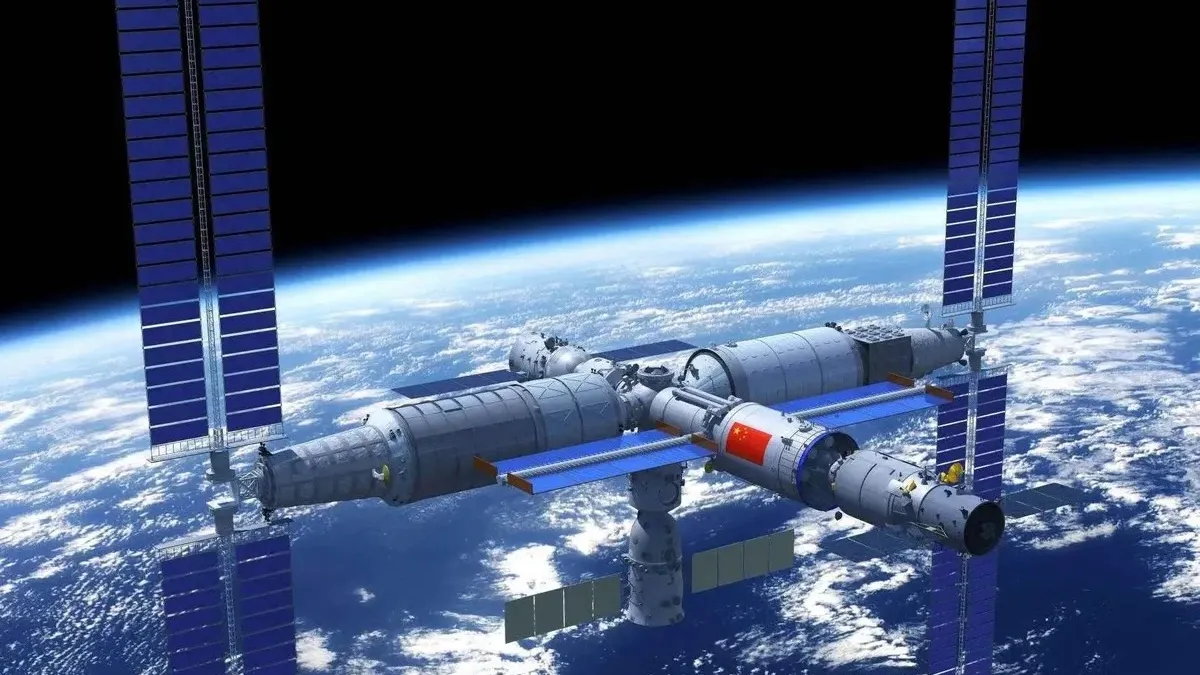
In a groundbreaking discovery, scientists have identified a previously unknown strain of microbe after analyzing samples collected from China's Tiangong space station. The newly named microbe strain, Niallia tiangongensis, was isolated from microbial samples obtained from the surfaces of Tiangong during the Shenzhou 15 crewed mission, which successfully returned to Earth in June 2023. This remarkable find marks the first time a new species has been documented aboard Tiangong, which is a three-module space station situated in low Earth orbit.
The new microbe, Niallia tiangongensis, is characterized as an aerobic, spore-forming, and rod-shaped bacterium. Its detailed description can be found in a peer-reviewed paper published in the International Journal of Systematic and Evolutionary Microbiology in March. Notably, this strain is closely related to a species found on Earth in soil and waste, which is known to cause infections and potentially lead to sepsis in immunocompromised individuals.
The determination of Niallia tiangongensis as a new strain was achieved through several scientific methods, including morphological observation, genome sequencing, phylogenetic analysis, and metabolic profiling. This bacterium belongs to the genus Niallia within the family Cytobacillaceae.
Understanding the characteristics of microbes during long-term space missions is crucial for ensuring the health and safety of astronauts, as well as maintaining the functionality of spacecraft. The paper emphasizes how the unique adaptations of Niallia tiangongensis to the conditions in orbit distinguish it from its terrestrial relatives. Notably, this microbe exhibits a heightened oxidative stress response and possesses a distinctive biofilm-forming ability that aids in repairing radiation damage.
These adaptations are attributed to structural and functional differences in two types of proteins, demonstrating that Niallia tiangongensis has developed specialized mechanisms to survive in the harsh space environment.
The research was conducted by a team from the Shenzhou Space Biotechnology Group and the Beijing Institute of Spacecraft System Engineering. Astronauts aboard Tiangong routinely collect microbial samples from the space station's air, surfaces, and water dispenser outlets to monitor the environmental conditions of the station.
This discovery is not an isolated event, as it follows a trend of novel species being identified in space. While space stations are designed to be clean environments, they are exposed to higher levels of radiation compared to Earth. Astronauts returning from missions carry trillions of microscopic organisms with them, leading to new bacterial strains being identified from the International Space Station (ISS). Some of these strains have the potential to assist astronauts in growing crops on Mars.
Recently, 26 previously unknown bacterial species were uncovered in NASA clean rooms, which represent some of the most sterile environments humanity has created to prevent unwanted microbes from contaminating spacecraft destined for other planetary bodies. Ongoing research aboard Tiangong includes evaluating how microbes interact with various materials used in the space station, as reported by China Central Television (CCTV) and citing China's human spaceflight agency.
Tests are being conducted on how the fungus Aspergillus niger (commonly known as black mold) affects materials such as polyurethane-coated circuit boards, bare copper boards, and heat-shrink tubing. This research aims to deepen our understanding of how microbial colonies may contribute to corrosion and other challenges in the unique conditions of space.